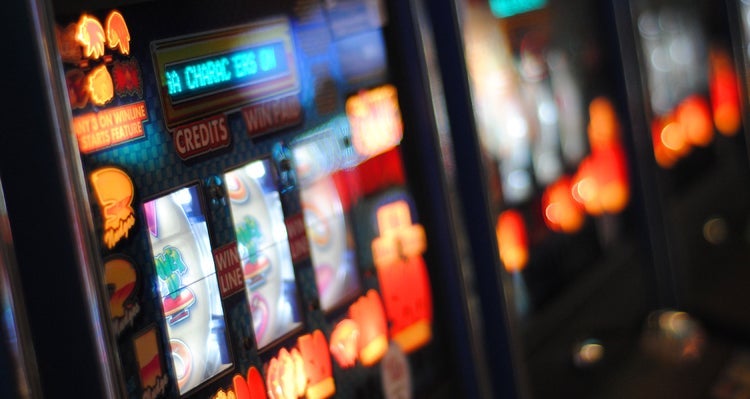Professor Kevin Harrigan, Director of the Knowledge Translation Stream at Waterloo's Gambling Research Lab, and Professor Dan Brown, Director of the David R. Cheriton School of Computer Science, are determined to figure out the best way to educate players about the addictive properties of slot machines and how much money they might win or lose.
This excerpt is from a special feature article by Mirjam Guesgen that was published in TheRecord.com on September 10, 2018.

He started out teaching students how to design two-dimensional video games, but the University of Waterloo professor became intrigued by how slot machines, fairly simple games by nature, could get people hooked, sometimes with devastating financial and personal consequences.
Games are designed to play on the brain's reward system to keep people engaged. The difference between computer games and slot machines is that one rewards skill, whereas the other is based on chance — and that chance is heavily weighted against the player.
"I thought, there must be something about these games that is part of the problem, and so I started to research to see how these games were designed, and a couple of things bothered me."
Harrigan found that one way to keep players glued to a gaming machine is to make them think they are winning more often than they are.

Photo credit: Photo by "Hello I'm Nik" on Unsplash
Machines will flash bright lights or make celebratory sounds when a player has won 80 cents, even though they had gambled a dollar, Harrigan explains. A player's physical reaction to this loss disguised as a win is the same as if they had actually won.
If you ask someone to guess how much they have won in an hour when losses disguised as wins are programmed into the machine, they will almost always overestimate.
Another tactic is to make players feel they are close to winning. The near miss, Harrigan explained, was a common phenomenon on older, reel-style gaming machines. The reels would spin and two of the three win symbols might line up, with the final symbol rolling just above or below the win line.
"If you watch players in a casino — and there's lots of research to support this — if they get one of these they'll snap their fingers and say 'Oh shucks' or something like that. They really do have an effect on the player," says Harrigan.
Players think they are more likely to win on the next spin, even though, mathematically speaking, each spin is independent from the last.
With the advent of digital gaming machines, manufacturers could program near misses to occur up to 12 times more often than by chance alone. "[The players] had no way of knowing. I didn't think that was fair," Harrigan said.
When Harrigan began his work 17 years ago, players had no way of knowing their odds when they slid their coin into a slot machine.
"I made it a bit of a mission of mine to spread the word about how these games were designed."

The simple, easy to understand design appealed. Brown had even sketched out what the labels might look like. "They looked awful 'cause I'm not a graphic designer," he joked.
They were determined to take their ideas outside the lab and approached the Ontario Lottery and Gaming Corp. for support.
"OLG said that seemed like a reasonable idea and if we could find out what the most important information we could provide to the player was, then we could experiment ... and see what the players did with this extra information," Harrigan said.